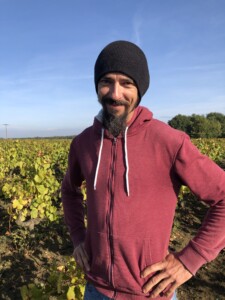Batard Langelier

Jérémie Batard
About
Owner & winemaker: Jérémie Batard
Vineyards: 24ha, all estate-owned
Vineyard management: Certified organic
Soils: Granite, gneiss, and gabbro
Grapes grown: Melon de Bourgogne (95% of plantings), Merlot, Cabernet Franc
Annual production: 50,000 bottles
Quick facts:
- Jérémie Batard is the third generation in his family to make wine–he rejoined his parents at the family estate in 2017.
- The vineyards have a strong oceanic influence, with the Atlantic Ocean less than 50km away.
- The wines are aged in the underground glass-lined cement tanks that are traditional for the region.
After time spent traveling abroad in Australia and Asia, in 2017 Jérémie Batard returned to the eastern Loire where he was born. It was not just the proximity to the Atlantic for great surfing, or the plethora of excellent seafood that called him back–it was the opportunity to take the reins of the family estate from his father and continue a tradition dating back to 1910.
Muscadet is a region with a strong identity, with unique soils and distinctive winemaking traditions. The 24ha of vineyards are trained in the “Guyot Nantais” system, which is typical for the region. Many of the vines were planted around sixty years ago, so since taking over Jérémie has been gradually replanting bit by bit to renew the vineyards. Farming is organic, and no synthetic treatments are used in the vineyards. The main challenge is coping with spring frosts, which are unfortunately becoming more and more frequent: in 2021, his average yield was only 17 hL/ha due to the effects of a mild winter, early budbreak, and severe spring frosts.
Jérémie has Melon de Bourgogne planted on quite varied soils, including granite, gneiss, and gabbro soils–the latter is found only in Muscadet. He vinifies the parcels separately by soil type in order to highlight the different expressions of the grape. All fermentations take place with native yeasts. The wines are aged for long periods on the lees in underground glass-lined cement tanks as is traditional in the region.

